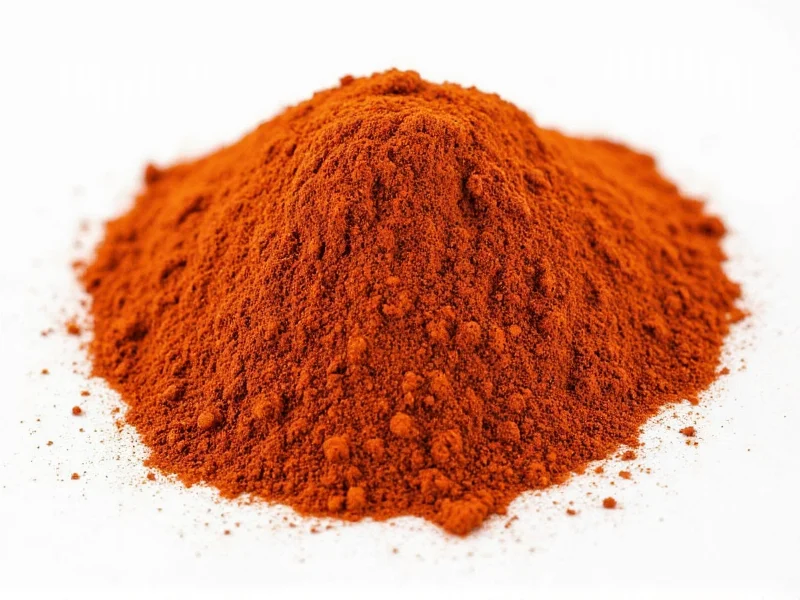Understanding Chipotle Chili Powder and Its Unique Flavor Profile
Chipotle chili powder delivers a distinctive smoky, earthy flavor with medium heat (2,500-8,000 Scoville units). Made from dried, smoked jalapeño peppers, it's fundamentally different from regular chili powder, which typically contains cumin, garlic powder, and oregano without the smoking process. This smokiness is crucial in authentic Mexican and Southwestern dishes like mole, adobo sauces, and carne asada marinades.
When you're mid-recipe without this specialty ingredient, knowing how to create an effective chipotle chili powder replacement becomes essential. The key is replicating both the smoke element and appropriate heat level while maintaining the earthy undertones that define this unique spice.
Top Substitutes for Chipotle Chili Powder
Not all chili powders work as direct replacements. Here's how to choose the best alternative based on what's in your pantry and your specific recipe requirements:
Smoked Paprika and Cayenne Blend
This is the most accessible chipotle chili powder substitute for most home cooks. Smoked paprika provides the essential smokiness while cayenne delivers controlled heat. For precise substitution:
- 1 teaspoon chipotle powder = 1/2 teaspoon smoked paprika + 1/2 teaspoon cayenne
- For milder dishes: 3/4 tsp smoked paprika + 1/4 tsp cayenne
- For spicier applications: 1/3 tsp smoked paprika + 2/3 tsp cayenne
This combination works particularly well in dry rubs, taco seasoning, and chili recipes where the smoky element is critical to the dish's character.
Ancho Chili Powder with Liquid Smoke
Ancho powder (made from dried poblanos) offers the earthy base flavor of chipotle without the smoke. Add complexity with:
- 1 teaspoon ancho powder + 2-3 drops liquid smoke
- For deeper flavor: 1 tsp ancho powder + 1/8 tsp ground cumin + 2 drops liquid smoke
This chipotle powder alternative works best in sauces and stews where the liquid smoke can properly distribute. Be cautious with liquid smoke—it's potent and can become bitter if overused.
Fresh Chipotle Peppers in Adobo Sauce
When you need a chipotle chili powder replacement with authentic texture and flavor, use minced chipotle peppers from adobo sauce. The conversion is:
- 1 teaspoon chipotle powder = 1 finely minced chipotle pepper + 1 teaspoon adobo sauce
This substitute adds moisture to your recipe, so reduce other liquids by 1-2 teaspoons. Ideal for salsas, marinades, and braises where the complex adobo flavors enhance the dish. Store leftover peppers in an airtight container in the refrigerator for up to 3 weeks.
| Substitute | Smoke Level | Heat Level | Best For | Limitations |
|---|---|---|---|---|
| Smoked Paprika + Cayenne | ★★★☆☆ | ★★★☆☆ | Dry rubs, spice blends, chili | Lacks earthy depth of true chipotle |
| Ancho Powder + Liquid Smoke | ★★★☆☆ | ★☆☆☆☆ | Sauces, stews, soups | Liquid smoke can overpower if misused |
| Chipotle in Adobo (minced) | ★★★★☆ | ★★★☆☆ | Marinades, salsas, braises | Adds moisture; changes texture |
| Regular Chili Powder | ★☆☆☆☆ | ★★☆☆☆ | Non-smoky applications | Lacks signature smokiness entirely |
| Guajillo Powder + Smoked Salt | ★★☆☆☆ | ★☆☆☆☆ | Mild dishes, Mexican rice | Much milder heat profile |
Recipe-Specific Substitution Guidance
The ideal chipotle chili powder replacement varies by dish type. Consider these recommendations when making your substitution:
For Dry Rubs and Seasoning Blends
Use the smoked paprika and cayenne combination. The dry texture matches perfectly, and you can adjust heat levels precisely. Add 1/4 teaspoon garlic powder to enhance the savory notes that chipotle naturally provides.
For Liquid-Based Recipes (Chili, Soups, Sauces)
Chipotle peppers in adobo sauce work best here. The liquid base accommodates the additional moisture, and the complex flavors meld beautifully during cooking. For every teaspoon of powder required, use one finely minced pepper plus one teaspoon of the adobo sauce.
For Mild Dishes Needing Just Smoke Flavor
When heat isn't the priority but smokiness is (like in certain bean dishes or mild salsas), use smoked paprika alone at a 1:1 ratio. This creates an effective chipotle powder alternative without smoke flavor concerns while maintaining the visual color.
Flavor Balancing Tips for Successful Substitutions
When using a chipotle chili powder substitute, these professional techniques ensure your dish maintains balance:
- Acid adjustment: Chipotle's smokiness benefits from acidity. Add 1/2 teaspoon lime juice or vinegar when substituting to brighten flavors
- Sweetness counterbalance: If your substitute creates excessive heat, add 1/4 teaspoon honey or brown sugar per teaspoon of substitute
- Texture consideration: When using fresh chipotle peppers, puree them with other wet ingredients for even distribution
- Layering technique: For deeper flavor, bloom your substitute in 1 teaspoon oil before adding to recipes
Remember that chipotle powder's magic comes from the smoking process, not just the pepper variety. The best substitutes address both the pepper characteristics and the smoking element. When experimenting with chipotle chili powder replacements, start with slightly less than the recipe calls for—you can always add more heat, but you can't remove it once incorporated.











 浙公网安备
33010002000092号
浙公网安备
33010002000092号 浙B2-20120091-4
浙B2-20120091-4